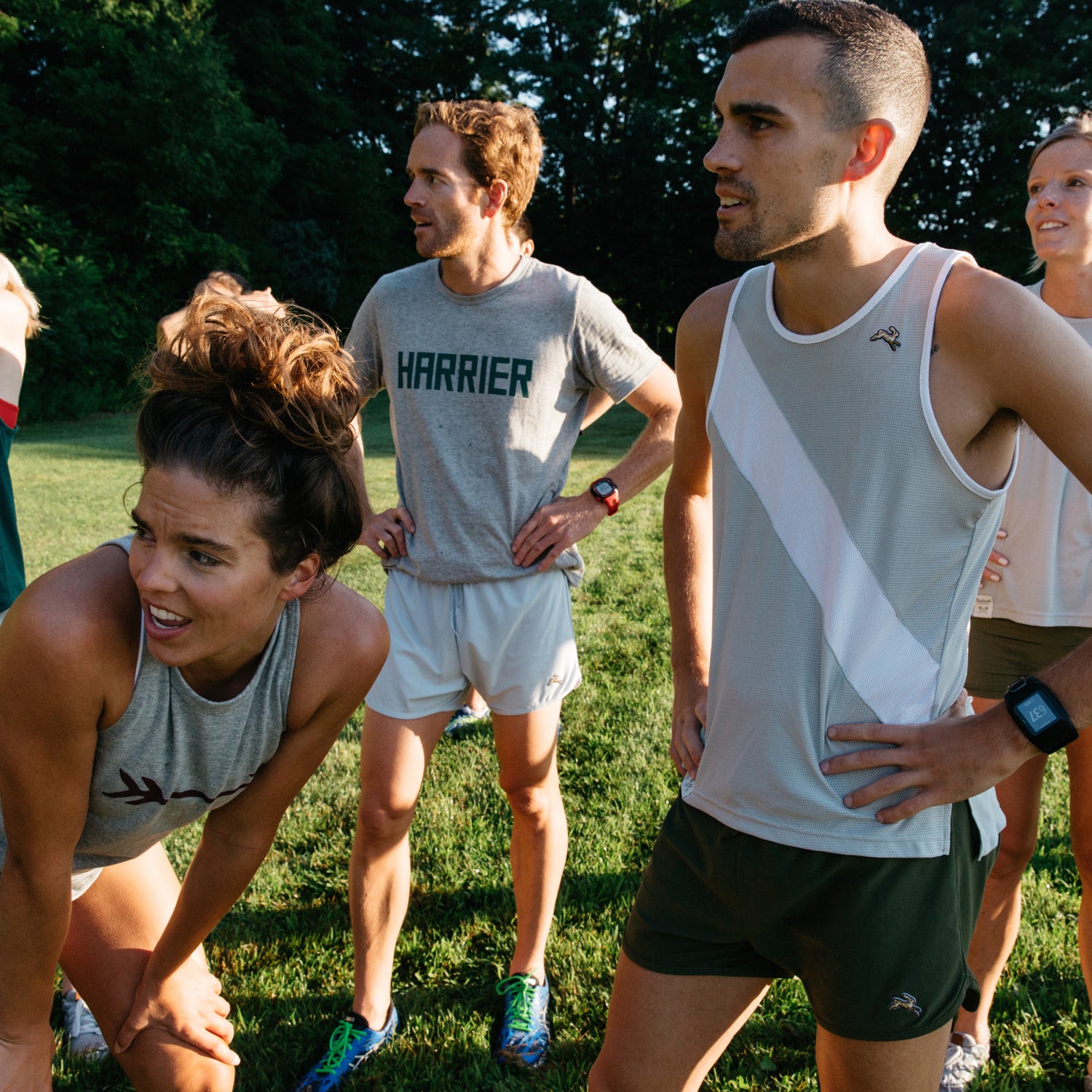A photo of triumph at the finish line is predictable and boring, says photographer . When she’s photographing sports, she’d rather point her camera at the guy racked with exhaustion, keeled over his bike on the side of the road or the woman wincing in pain after a grueling cross-country run in the rain. She finds real beauty in struggle and suffering.
Following this philosophy, she’s carved out a niche over the last couple of years shooting for outdoor brands, such as Rapha and Trek, that appreciate her candid style. Her latest project with running brand , shot in the White Mountains of New Hampshire, exemplifies her knack for capturing the unexpected and the spontaneous.
“Those are the images that elevate a sport and make it seem heroic but no so far fetched,” says Maye, 32, who lives in Santa Barbara, California. “Telling stories through physicality, that’s what’s ultimately important.”
For the Tracksmith shoot, she joined a dozen runners in a rural New Hampshire cabin for three days of cross-country workouts. This was not your typical, glamorous sports-brand commercial shoot. The crew crammed into bunk beds every night and went for long runs during the day. The runners and landscape, of course, are both gorgeous. Authenticity, after all, need not be unattractive.
, a fashion consultant who's advised brands including Nike and Patagonia, says Maye is part of a general trend in sports and marketing photography where the images aim toward the gritty and authentic. “It gives us a deeper look into the psychology of sport and what it means to be a contemporary athlete,” she says. “It can't always be about the podium and the accolades. We want to see real human stories.”
“I think that people see right through fake, over-produced imagery.”
Maye's work with Trek has been even more in-depth and intimate. For the past three seasons, she's embeded, day and night, with the , making pictures of the racers out on their bikes, but also half naked in their hotel rooms. She approaches these assignments like a documentary photographer might: make the subjects comfortable with your presence and then do your best to disappear. That’s how those kinds of genuine shots get made.
“I think [the need for authenticity] may have to do with how much imagery we’re inundated with now,” Maye says. “With Instagram, and Twitter, and Facebook, I think that people see right through fake, over-produced imagery.”
In her Tracksmith work, we see the rituals and preparations even more than we see the competitive event itself. Runners pulling up a pair shorts, huddled before a run, or stretching in an open field are of equal interest as the heroic wide shots of a single runner on a sun-dappled foggy morning.
Matt Taylor, Tracksmith co-founder and CEO, says it’s Maye’s ability to fade into the background that he finds so valuable. “Tracksmith holds running camps with real runners,” he said. “So when Emily is there quietly capturing every moment, it produces raw and authentic imagery that stands out from other brands.”
As you flip through her images, you’ll notice an appreciation for the human form: she loves to photograph details of riders’ or runners’ bodies that help tell their story. This comes from a lifetime of ballet practice (she still occasionally teaches at her mother’s dance school in Santa Barbara).
The simplest way to summarize her approach is to say that she’s chasing real moments. In the Tracksmith shoot, there’s an image of a runner collapsed on the ground, hands over his head, stray blades of grass stuck to his forearm. He’s completely spent. It’s not the heroic shot we might expect to see on a billboard, but it’s realer somehow. And to some, more compelling. “You have to be there for that moment,” Maye says. “You have to go to the guy that got second in that moment and not the guy who got first.”


